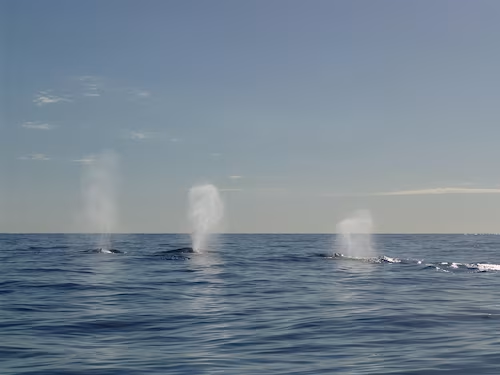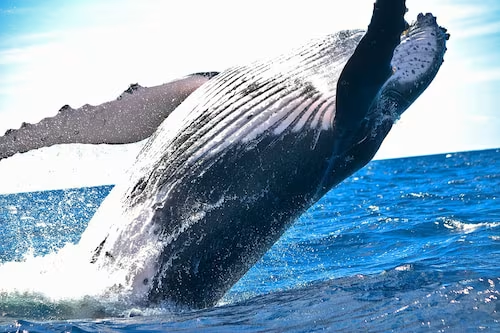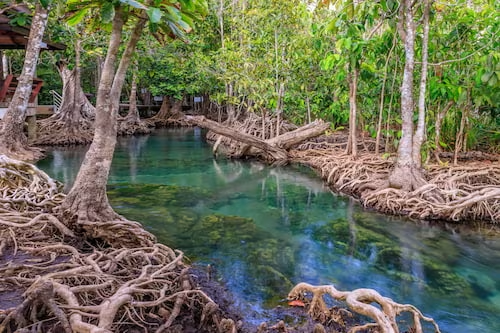Whale Watching in Samaná – A natural wonder in the Dominican Republic
Whale watching in Samaná – A natural wonder in the Dominican Republic
Why Samana Bay is one of the best whale watching spots in the world
Each year, from mid-January to late March, thousands of humpback whales migrate to the Bay of Samana, making this one of the top destinations globally for whale watching. These majestic creatures travel from the cold North Atlantic to the warm, calm waters of the Dominican Republic to mate, give birth, and nurse their young.
This natural sanctuary offers a rare and spectacular marine show, with dramatic breaches, fin slaps, and even baby whales learning to swim. Whale watching in Samana is more than just a tour—it’s an emotional, awe-inspiring experience.

Why do whales come to Samaná?
Every winter, up to 3,000 humpback whales migrate from the North Atlantic to the shallow waters of Samaná Bay. This location provides one of the best opportunities in the world to observe these cetaceans as they mate, give birth, raise their young, and migrate north again.
Why does this happen?
The warm temperatures and calm waters provide ideal conditions for reproduction. There are fewer predators than in the cold northern waters, providing a safe space for young calves before they begin their long journey home.
Thanks to these ideal conditions, Samaná has become one of Latin America's leading destinations for watching humpback whales.
Where to go whale watching in Samana?

1. Samana Bay
The most popular and accessible location. Most excursions depart from the Samaná port or nearby Las Galeras. Expect comfortable boats, knowledgeable guides, and safe observation practices. Samaná Bay is located off the Samaná Peninsula. Most excursions to this bay are organised, giving you an excellent opportunity to see these cetaceans in their natural habitat, making impressive jumps or playing with their young. From your boat, you'll be able to see these mammals swimming past you or playing with their young.
2. Marine Mammal Sanctuary – Bancos de la Plata y Navidad
On the high seas, a few kilometres off the coast of a marine reserve declared a World Heritage Site by UNESCO, this site offers an intimate and natural encounter between whales and humans, in an environment free from crowds and pollution.
3. Whale Watching from Las Terrenas
Smaller tours leave from this picturesque town, offering a more intimate experience with dramatic coastal views.
When can you see whales in Samaná bay?
Whale watching is strictly regulated and only takes place during the official season, from 15 January to 31 March. Daily excursions with tour operators are organized during this period, with peak activity in February.
Best time of day:
Early morning: the sea is calmer, providing the best conditions for observation.
Late afternoon/evening: you're more likely to see some spectacular jumps.
Booking with your tour operators in advance is highly recommended, as excursions can become very popular in high season!
Best whale watching tours in Samana
There are group tours, private charters, and eco-friendly sailboats. Most include:
Certified naturalist guidesWhale spotting guarantees (in peak season)Optional stops at Cayo Levantado for swimming or lunch
✔️ Choose operators certified by the Ministry of Environment to ensure ethical whale interaction and sustainable tourism practices.
How does a whale watching trip work?
The stages of a typical sea trip
The trip begins with embarkation at the port of Samaná or Las Galeras.
Sailing to designated whale watching areas, accompanied by professional guides.
Observation of the whales at sea, with explanations of their behaviour, migration patterns and characteristics.
The return to port is usually accompanied by an idyllic swim on the island of Cayo Levantado.
Types of excursions available
Group boats are ideal for smaller budgets and groups of up to twenty people.
Private excursions: for an immersive, personalised experience, ideal for photographers or families.
Eco-friendly sailboats: for a quiet, immersive experience.
Tip: Choose a certified company to ensure a trip that respects the whales and their environment.
What to bring for whale watching in the Dominican Republic
Light jacket (it gets windy at sea)
Sunglasses & sunscreen
Binoculars & waterproof camera
Motion sickness pills (if needed)
A hat or cap
When can you see whales in Samana?
From mid-January to late March. February is the best month for sightings.
What kind of whales are in Samana, Dominican Republic?
Only humpback whales migrate here. They come to breed and give birth.
Where is the sanctuary of the humpback whales in Samana?
The Bancos de la Plata and Navidad Marine Mammal Sanctuary, designated by UNESCO.
What is the best whale watching tour in Samana?
Tours leaving from Samana Port or Las Terrenas with certified guides offer the best experiences.
Can you go whale watching from Punta Cana?
Yes, but it’s a 3-4 hour drive. Renting a car is the best option for flexibility.
Is whale watching in the Dominican Republic safe?
Yes, tours follow strict regulations. Choose licensed operators with safety briefings.
Discover Samaná with total freedom with Jumbo Car
Whale watching in Samana is just the beginning. Renting a car with Jumbo Car gives you the freedom to explore more of the region:
🏞️ Salto El Limón –
An impressive waterfall located 30 minutes from Samaná. This amazing 40-metre waterfall can be reached on foot or on horseback through the lush jungle.
🏖️ Cayo Levantado –
The island paradise A white sandy beach and postcard turquoise waters make this destination the ideal place to swim after whale watching.

🌿 Los Haitises National Park –
An impressive national park Home to exceptional biodiversity, Los Haitises National Park is a UNESCO World Heritage Site. Los Haitises National Park is an impressively large national park located in the Bay of Samaná. A unique ecosystem full of caves, mangroves and rock formations, it is home to exceptional species such as pelicans, herons and manatees.

A unique ecosystem full of caves, mangroves and rock formations, it is home to exceptional species such as pelicans, herons and manatees.
🛻 With an SUV from Jumbo Car, you can create your own itinerary, avoid tour bus schedules, and visit multiple spots in one day.
Ready to see whales in Samana ?
Whether you're dreaming of humpback whales breaching beside your boat or a full day exploring waterfalls and hidden beaches, Jumbo Car is your key to unlocking Samana's wonders.
✅ Book your car now and start your whale-watching adventure in total freedom!